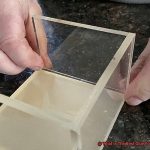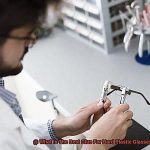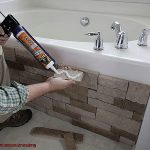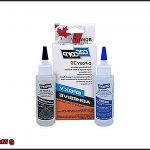Ah, plywood – the jack-of-all-trades material that has revolutionized woodworking. It’s like a superhero, embodying strength, durability, and endless possibilities. From crafting furniture to constructing cabinets, plywood offers a sturdy foundation for countless projects. But here’s the catch – achieving flawless results requires the perfect adhesive to keep it all together.
Picture this: you spend hours meticulously building a beautiful bookshelf, only to have it crumble under the weight of your beloved novels. Talk about heartbreak. That’s why we’re on a mission to uncover the holy grail of glues, specially formulated for bonding plywood together.
In this blog post, we embark on an exciting journey to discover the best glue – the secret weapon that ensures your plywood creations remain rock-solid for years to come.
But before we dive into glue selection 101, let’s address the elephant in the room – plywood’s unique construction. It’s made up of thin layers or plies of wood glued together, giving it its strength. And so, choosing the right glue becomes paramount for maintaining the integrity of this engineered wood.
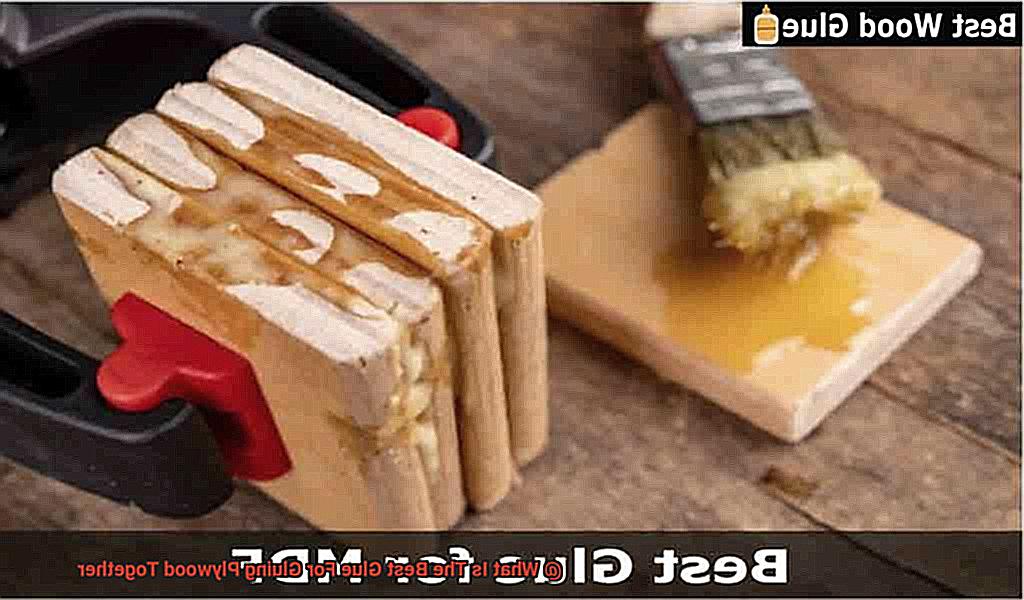
Throughout this article, we’ll explore three main contenders in the world of plywood glues – polyvinyl acetate (PVA), epoxy, and polyurethane. Each one has its own set of superpowers and applications that have earned them a special place in the woodworking community.
So whether you’re an eager woodworking enthusiast or a seasoned craftsman seeking that ultimate adhesive solution, buckle up as we unveil tried-and-true practices along with some handy tips and tricks for achieving seamless plywood joints that stand strong against time.
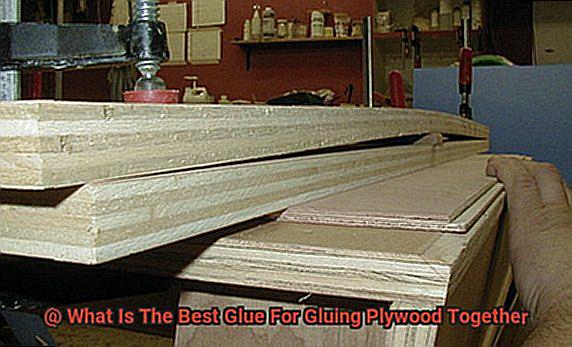
Types of Glue for Gluing Plywood Together
Contents
- 1 Types of Glue for Gluing Plywood Together
- 2 Polyvinyl Acetate (PVA) Glue
- 3 Epoxy Resin
- 4 Polyurethane Glue
- 5 Marine Grade Adhesive
- 6 Preparing Plywood for Gluing
- 7 Applying the Glue to Plywood
- 8 Clamping the Plywood Together
- 9 Curing Time for Different Types of Glue
- 10 Factors to Consider When Choosing a Glue for Plywood Projects
- 11 Pros and Cons of Different Types of Glues for Gluing Plywood Together
- 12 Conclusion
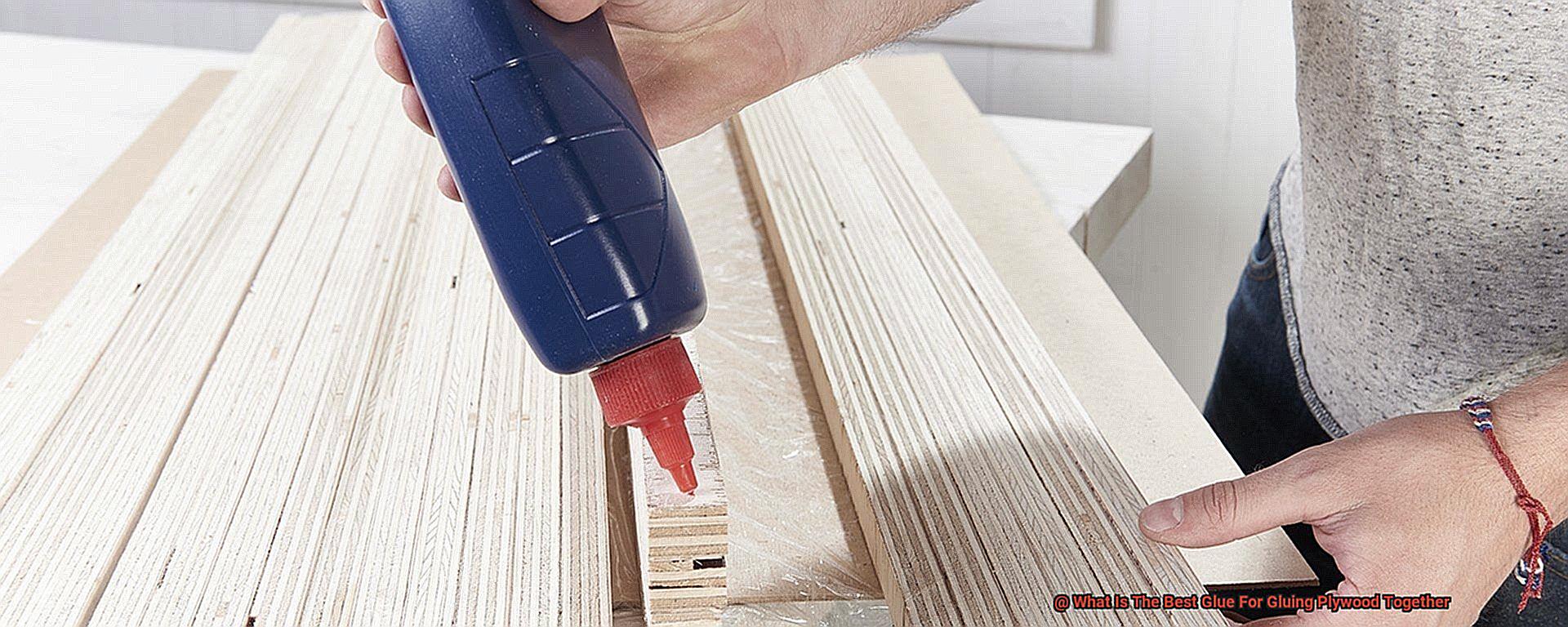
In the world of woodworking, gluing plywood together is a fundamental step in creating sturdy and resilient structures. The glue you choose significantly impacts the quality of the bond. In this comprehensive guide, we will delve into the enchanting realm of various glues that can be utilized for gluing plywood together, each possessing its own mesmerizing properties.
Carpenter’s Glue: The Golden Warrior of Adhesives
Carpenter’s glue, also affectionately known as yellow glue or PVA glue, stands tall as one of the most beloved choices for bonding plywood. Its ease of use, rapid drying time, and unwavering strength make it a true warrior in the realm of adhesives. Moreover, this versatile glue boasts water-resistant capabilities, rendering it an ideal companion for both indoor and outdoor projects. With carpenter’s glue by your side, you can conquer any woodworking endeavor.
Polyurethane Glue: The Marvelous Moisture-Resistant Marvel
Behold, the majestic polyurethane glue. Often bestowed with the moniker PU glue or Gorilla Glue, this adhesive marvel is an exceptional option for bonding plywood. Its ability to forge an unyielding bond while fending off the relentless onslaught of moisture makes it a formidable ally in both interior and exterior applications. A fascinating aspect of polyurethane glue is its unique property to expand as it cures, flawlessly filling in gaps and irregularities on the plywood surface. Prepare to be captivated by its enchanting powers.
Epoxy: The Dynamic Duo of Strength and Endurance
Enter the world of epoxy adhesives, where strength and durability reign supreme. These adhesive superheroes consist of two components – a resin and a hardener – which must be skillfully combined before embarking on their mission. With their formidable capabilities, epoxies create a bond that can withstand the harshest of conditions and bear the weight of heavy loads. However, it is important to heed their need for a longer curing time compared to other glues, and they may require the comforting embrace of clamps during the drying process.
Contact Cement: The Swift and Steadfast Laminator
Witness the prowess of contact cement as it seamlessly laminates plywood surfaces together with astonishing speed. Enveloped in its watery or solvent-based formulas, this adhesive champion offers an instant bond that leaves no room for hesitation. No clamps are required when engaging in its magical touch. Beware, however, for its powers may not be as suitable for larger surface areas or projects that demand flexibility.
Cyanoacrylate (Super Glue): The Nimble Fixer
Prepare to be amazed by the swift prowess of cyanoacrylate adhesives, more commonly known as super glue.
Polyvinyl Acetate (PVA) Glue
Step into a world where woodworking dreams come true, where plywood pieces bond seamlessly with the touch of a magical adhesive. Welcome to the captivating realm of Polyvinyl Acetate (PVA) glue, the revered choice of DIY enthusiasts, woodworkers, and professionals alike. Together, let us embark on a thrilling journey as we uncover the remarkable advantages and occasional limitations of using PVA glue to unite plywood.
Advantages of PVA Glue for Plywood Bonding:
A Bond You Can Rely On:
Marvel at the mystical strength of PVA glue as it effortlessly creates an unbreakable connection between plywood pieces. With careful application and complete drying, this adhesive conjures a bond capable of withstanding the strenuous demands of woodworking projects. Rest easy, for your plywood structures shall remain intact.
Easy Peasy Application:
Witness the enchantment of simplicity as PVA glue emerges as the effortless choice for all your gluing needs. Unlike its complex counterparts, this water-based wonder requires no elaborate mixing or measuring rituals. Straight from the bottle, it is ready to perform its magic. With its generous open time, you can elegantly position and adjust your plywood pieces before the glue solidifies, granting you precision and perfection.
Clean-Up Made Simple:
Rejoice in the knowledge that PVA glue possesses not only power but also benevolence. Accidents may befall us in our noble woodworking endeavors, but fear not. This extraordinary adhesive can be cleansed with mere water while still in its wet state. Bid farewell to the frantic scraping of dried glue and cease your worry about blemishes upon your splendid plywood creations.
A Friend in Imperfections:
Embrace the comforting embrace of PVA glue as it embraces the flaws of imperfect plywood pieces. Its unparalleled viscosity fills in minuscule gaps and irregularities, ensuring a steadfast bond between each fragment. No longer shall the imperfections haunt your projects, for PVA glue banishes them with its spellbinding gap-filling properties.
Epoxy Resin
Enter the realm of woodworking mastery, where plywood is transformed into a symphony of strength and resilience through the mystical powers of epoxy resin. As an expert in the art of epoxy, I am here to unveil the secrets behind its unparalleled ability to bond plywood together.
Let us embark on this magical journey by understanding the very essence of epoxy resin. It is a two-part adhesive, composed of a resin and a hardener, whose harmonious fusion initiates a curing process that forges a bond so unyielding, it could withstand the trials of mythical beasts. And when it comes to binding plywood, this enchanting elixir works wonders beyond imagination.
One of the most extraordinary attributes of epoxy resin is its capacity to bridge gaps and mend uneven surfaces. Picture yourself confronted with plywood sheets that are not flawlessly smooth or precisely aligned – fear not. Epoxy resin possesses a remarkable viscosity that allows it to permeate the very fibers of the wood, embracing imperfections and weaving them into a connection that is as tight as the knot of ancient oak. It is akin to having an otherworldly craftsman at your side, mending flaws with an unseen hand.
But lo and behold. Epoxy resin does not discriminate when it comes to plywood types. Be it hardwood plywood, softwood plywood, or even the most formidable marine-grade plywood, this adhesive rises to every challenge with unwavering resolve. Its tenacious adhesion to both porous and non-porous surfaces empowers you to seamlessly unite diverse types of plywood without breaking a sweat.
Now, let us contemplate the essence of time – for time is a precious commodity in the realm of woodworking. Fear not, my friends, for epoxy resin grants you an abundance of time. Like an eternal hourglass turned on its side, it bestows upon you ample moments to apply and position the adhesive with utmost precision before it embarks on its journey towards solidification. No rush, no panic – just the tranquil embrace of woodworking bliss.
Polyurethane Glue
Step into the realm of woodworking mastery, where plywood becomes a canvas for innovation and creativity. In our previous quest, we marveled at the powers of epoxy resin, but now, a new adhesive has emerged from the depths of craftsmanship – polyurethane glue. This enchanting elixir will be your steadfast ally in the world of plywood bonding. So grab your tools and prepare to unlock the true magic of polyurethane glue.
Forge an Unbreakable Bond:
Polyurethane glue is no ordinary adhesive; it possesses an extraordinary strength that defies gravity itself. When it comes to bonding plywood, this mystical potion creates an unbreakable bond, ensuring that your creations withstand the test of time.
Embrace Limitless Versatility:
From crafting elegant furniture to fashioning intricate cabinetry, polyurethane glue is your versatile companion on every woodworking adventure. Its adaptability knows no bounds, effortlessly bonding plywood in both interior and exterior projects.
Defy the Forces of Moisture:
The battle against moisture can be relentless, but fear not. Polyurethane glue stands tall as a formidable shield against the elements. With its exceptional moisture resistance properties, your plywood projects will remain unyielding, even when faced with damp conditions or ever-changing weather.
Fill Gaps with Unseen Grace:
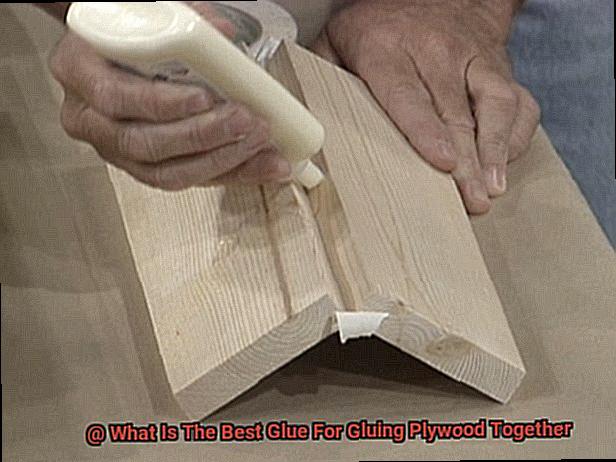
Imperfections are merely opportunities for perfection to shine through. Thanks to the sorcery of polyurethane glue, uneven surfaces and gaps become mere illusions. This extraordinary adhesive possesses the power to fill gaps between plywood surfaces, creating a seamless and secure bond that will leave you in awe.
Simplicity in Your Hands:
No need to wield complex incantations or decipher cryptic instructions. Polyurethane glue embraces simplicity, allowing you to master its magic with ease. With its liquid form, you can effortlessly apply the adhesive to plywood surfaces using a brush or applicator of your choosing. A few strokes, and you’ll witness the birth of something extraordinary.
Patience Rewarded:
In this enchanting world of polyurethane glue, patience is the key to unlocking its full potential. Although the curing time may vary depending on factors like temperature and humidity, the wait is worth it. Give this magical adhesive a few hours to work its wonders, and you’ll be rewarded with a bond that surpasses all expectations.
Marine Grade Adhesive
Today, we embark on a quest to unravel the mysteries of marine grade adhesive. Prepare to be captivated as we unveil the extraordinary features that make this adhesive the unrivaled choice for bonding plywood in marine applications. So gather your tools, and let us plunge into the depths of this fascinating world.
Unyielding Water Resistance:
Imagine yourself amidst the relentless assault of crashing waves and unpredictable weather out at sea. Under such merciless conditions, ordinary adhesives crumble, but fear not. Marine grade adhesive emerges as the champion with its unparalleled resistance to water. Crafted to endure the harshest marine environments, this adhesive forges a bond so robust that even Poseidon himself would be astounded. Bid farewell to concerns about water penetration weakening your plywood over time – marine grade adhesive is your impenetrable shield.
Battle-Hardened Durability:
Marine environments are notorious for subjecting materials to extreme tests. Yet, rejoice. Marine grade adhesives have been meticulously formulated to withstand the relentless assault of saltwater, UV rays, and temperature fluctuations. As you navigate treacherous waters or bask in the scorching sun, rest assured that your plywood remains steadfastly bonded. With marine grade adhesive, durability is not merely a feature – it is an unwavering pledge.
The Right Arsenal for Triumph:
Now that we comprehend the importance of marine grade adhesive, let us venture into the realm of popular options available to bond plywood in marine applications. Behold the versatility of polyurethane adhesives, offering exceptional flexibility and water resistance, making them a coveted choice for boat builders seeking dependable bonds. For those who demand unyielding strength and durability, embrace the mighty grip of epoxy adhesives, capable of overcoming the most arduous challenges. And for the discerning craftsmen seeking a delicate balance between strength and flexibility, look no further than structural adhesives – your compass to success. No matter your plywood bonding needs, marine grade adhesives offer a tailored solution for every voyage.
Preparing Plywood for Gluing
Today, we embark on a fascinating journey into the depths of preparing plywood for gluing. Just like a ship needs a sturdy hull to sail through stormy seas, plywood needs proper preparation to ensure a strong and enduring bond. So, gather your tools, put on your DIY captain’s hat, and let’s dive right in.
Step 1: Clear the Decks – Clean the Surface
To achieve a glue-up that withstands the test of time, we must start with a clean deck. Wipe away any dust, dirt, or debris using a clean cloth or a trusty vacuum cleaner. This meticulous cleaning ensures that our glue adheres securely, creating a rock-solid bond between the layers of plywood.
Step 2: Scour for Weak Spots – Check for Defects
As captains of this woodworking adventure, we must inspect our plywood for hidden weaknesses. Knots, cracks, or voids can be lurking beneath the surface, undermining the strength of our bond. Fill small defects with wood filler or epoxy resin, while larger ones may require patching with matching plywood. By repairing these imperfections, we ensure our glue-up is as sturdy as possible.
Step 3: Smooth Sailing – Sanding the Surface
Ahoy, mateys. It’s time to navigate through rough waters and smooth out any imperfections. Grab your sandpaper and let’s set sail on this crucial step. Start with coarse grit sandpaper and gradually work your way up to finer grits. This process creates a roughened surface that provides optimal grip for the glue to adhere firmly to the plywood. Remember to sand in the direction of the grain to avoid any unwanted damage.
Step 4: Clear Skies – Remove Sanding Dust
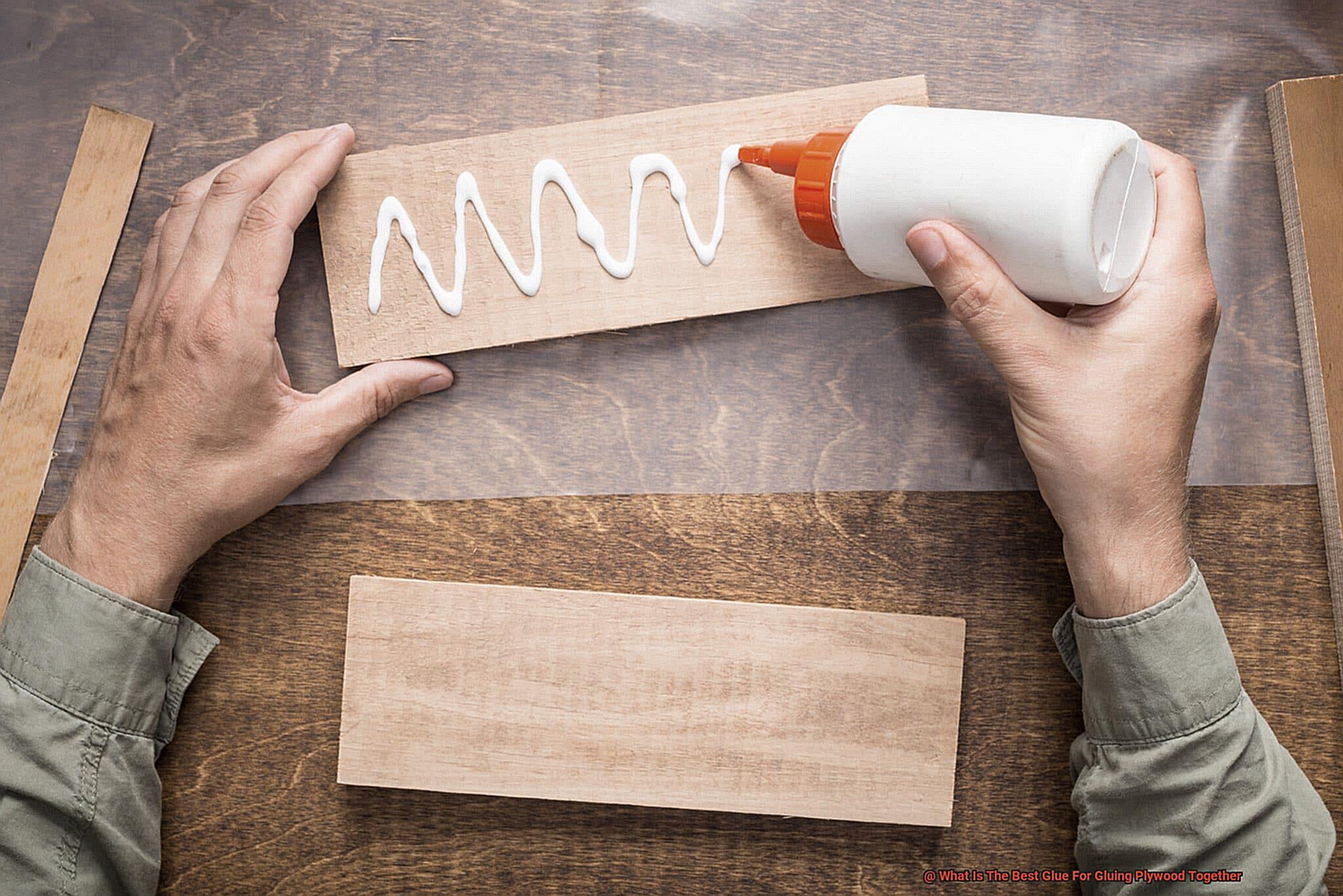
Emerging from our sanding voyage, we must clear the skies and rid our plywood of any lingering sanding dust. Use a tack cloth or a damp cloth to wipe away all those pesky particles. A clean and dry surface sets the stage for a successful glue-up, ensuring maximum adhesion between the layers.
Applying the Glue to Plywood
Today, we embark on a thrilling voyage to uncover the secrets of applying glue to plywood. With the precision of a seasoned captain, we will navigate through the intricacies of surface preparation and the artistry of gluing, ensuring a bond that will weather any storm. So hoist your tools and let’s set sail.
The Perfect Mate: Choosing the Right Glue
In our woodworking arsenal, there is no greater first mate than carpenter’s glue. Known as yellow glue or aliphatic resin glue, this water-based adhesive reigns supreme. To ensure a bond that stands the test of time, opt for a high-quality carpenter’s glue specifically designed for woodworking projects.
Preparing for a Flawless Encounter: Surface Preparation
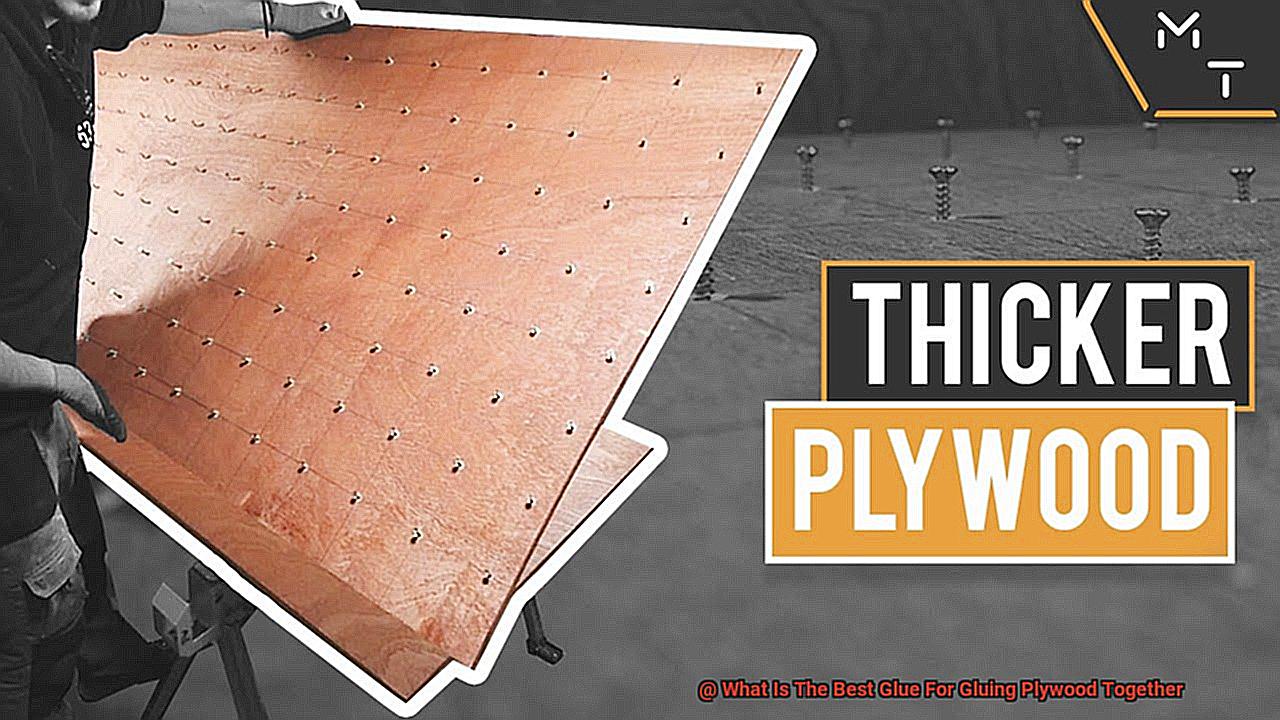
Just as a captain clears the decks before setting sail, we must prepare our plywood for the ultimate bonding experience. Smooth sailing begins with sanding the surfaces that will be joined together, eliminating any roughness or imperfections. A pristine surface paves the way for enhanced adhesion and an unyielding bond. Remember to banish all sanding debris with a clean cloth before continuing.
The Dance of Adhesion: Applying the Glue
Now, imagine yourself as a master artist, delicately brushing on an even layer of glue onto one of the surfaces destined for union. Whether you choose a brush or roller, ensure that the glue paints itself evenly across the entire area to be bonded. Remember, restraint is paramount – avoid excessive glue application to prevent messy squeeze-out.
The Union of Strength: Joining and Clamping
Just as a captain navigates treacherous tides with determination, so too must we apply even pressure when joining our plywood pieces. Align the glued surface with its destined partner, pressing them together with unwavering conviction. To secure this union during the glue’s drying process, employ clamps positioned strategically along the bond’s length. Tighten the clamps with purpose, ensuring a steadfast hold without sacrificing all of the glue to squeeze-out.
Clamping the Plywood Together
Prepare to embark on a thrilling journey through the captivating realm of clamping plywood together. In our previous adventures, we explored the intricate world of gluing plywood, but now it’s time to unlock the secrets of achieving a bond so strong it could weather any storm.
Imagine clamping as the unwavering anchor that binds your plywood layers tightly, leaving no room for error. Let me be your guide as we navigate through the crucial steps required to forge an unyielding connection.
First and foremost, let’s acquaint ourselves with the diverse range of clamps at our disposal. Just like a well-equipped ship, there are various options to choose from in your woodworking arsenal. Bar clamps, pipe clamps, C-clamps, and spring clamps each possess their own distinctive advantages and limitations. Selecting the right tool is paramount, my friends.
Now, picture this: you stand at the precipice of a gluing adventure. But before you dive headfirst into the sea of adhesives, take a moment to ensure your surfaces are primed for success. In the realm of gluing, cleanliness reigns supreme. Ensure your plywood is free from even the tiniest speck of debris or dust that could undermine your bond.
Having prepared a pristine canvas, it’s time to apply the glue. Brush, roller, or spreader? The choice is yours, but remember to coat both surfaces evenly. Here’s a pro-tip: enlist dowels or alignment pins to assist in aligning the plywood layers with surgical precision. It’s all about achieving that perfect fit.
With your surfaces aligned flawlessly, it’s time for our clamping heroes to make their entrance. Strategically position them along the edges of your plywood masterpiece and gradually tighten them with utmost care. We mustn’t overwhelm a single area, for that could spell disaster in the form of warping or bending. A delicate touch is our secret weapon.
Now, my friends, we must be patient as we engage in the waiting game. The duration of this interlude will depend on the type of glue you’ve chosen for your grand endeavor. Some may demand only a few minutes of clamping, while others require several hours or even an entire night’s rest. Trust in the wisdom of the manufacturers and follow their instructions to achieve true glory.
Curing Time for Different Types of Glue
When it comes to bonding plywood, the choice of glue is crucial for achieving a strong and durable bond. Each type of glue has its own unique curing time, which determines how long it takes for the glue to fully dry and bond the plywood together. In this article, we will explore the different types of glue commonly used for plywood projects and delve into their specific curing times.
Wood Glue: A Swift Bond
Wood glue, also known as carpenter’s glue or PVA glue, is a popular choice for gluing plywood. One of its notable advantages is its relatively fast curing time. Most brands recommend a clamp time of around 30 minutes and a full cure time of 24 hours. However, it’s important to note that the exact curing time may vary depending on factors such as temperature and humidity. With wood glue, you can achieve a quick and reliable bond for your plywood projects.
Epoxy Resin: Time for Strength
Epoxy resin is renowned for its exceptional adhesion and durability. However, it typically requires a longer curing time compared to wood glue. The curing time for epoxy resin can range from a few hours to several days, depending on the brand and formulation. It’s crucial to follow the manufacturer’s instructions to ensure optimal results. Although epoxy resin may take longer to cure, its strength and resilience make it an ideal choice for outdoor or high-moisture applications where long-term durability is essential.
Super Glue: Lightning-Fast but Less Durable
Super glue, also known as cyanoacrylate adhesive, is famous for its lightning-fast drying properties. Most brands achieve a complete cure in just a few minutes. However, it’s important to note that while super glue offers quick results, it may not provide the same level of strength and durability as wood glue or epoxy resin. Super glue is best suited for small, lightweight plywood projects that don’t require heavy-duty bonding.
Polyurethane Glue: Patience Pays Off
Polyurethane glue offers a strong bond and has good resistance to water and heat. However, it typically has a longer curing time compared to wood glue. Some brands suggest a clamp time of 1-2 hours and a full cure time of 24 hours or more. It’s crucial to note that polyurethane glue expands as it cures, filling any gaps or voids between the plywood layers. To prevent warping or bowing during the curing process, using clamps or other means is advisable. While polyurethane glue requires patience, the resulting bond is well worth the wait.
Factors to Consider When Choosing a Glue for Plywood Projects
Choosing the right glue for your plywood projects is like finding the perfect dance partner. You need someone who can keep up with your moves and won’t let you down on the dance floor. In this case, the dance floor is your plywood project, and the glue is your partner. So, let’s explore the factors you should consider when choosing a glue for plywood projects.
- Type of Glue: Just like dancers have different styles, glues come in different types. Polyurethane glue, epoxy glue, and wood glue are common options for plywood projects. Choose a glue that is compatible with plywood to ensure a strong bond and avoid adhesive failure.
- Bond Strength: Plywood projects often face heavy loads and external forces, so a strong and durable bond is crucial. Look for a glue that offers high bond strength to create a reliable connection between plywood layers. You don’t want your project falling apart or exposing weak spots.
- Water Resistance: Plywood is vulnerable to moisture and water damage, making water resistance an important factor. If your project will be exposed to outdoor elements or high humidity areas, choose a glue that provides good water resistance. This will prevent delamination and weakening of the plywood over time.
- Drying Time: Time is of the essence in any project, so consider the drying time of the glue. Some glues dry quickly, allowing you to move forward sooner, while others require longer curing times. Choose a glue that fits your project timeline to avoid unnecessary waiting or rushing.
- Ease of Application: Working with a glue that is easy to apply and spreads evenly will make your plywood project more efficient and enjoyable. Avoid glues that require complex procedures or specialized tools, as they can complicate the process and lead to frustration.
- Toxicity and Safety: Safety should always be a priority when working with glues, especially in enclosed spaces or if you have health concerns. Some glues emit harmful fumes during the drying process or contain toxic chemicals. Look for glues labeled as non-toxic or low in volatile organic compounds (VOCs) to ensure a safe working environment.
- Cost: Finally, consider your budget when choosing a glue. There are glues available at different price points, so find a balance between quality and affordability. Consider the specific requirements of your project and choose a glue that offers the best value for your money.
Pros and Cons of Different Types of Glues for Gluing Plywood Together
When it comes to bonding plywood, selecting the right glue is a make-or-break decision for your project. With a plethora of options available, finding the perfect glue can be daunting. In this article, we will explore the pros and cons of different types of glues commonly used for gluing plywood together. So, let’s embark on this adhesive adventure and discover which glue will make your plywood project stick.
Polyvinyl Acetate (PVA) Glue:
PVA glue, available in white or yellow varieties, is a go-to choice for plywood projects. Its ease of use, clear drying property, and widespread availability make it a convenient option. PVA glue also forms a strong bond and is resistant to water. However, its strength might not match that of other glues, making it less suitable for high-stress applications.
Epoxy Glue:
Step aside, ordinary glues. Epoxy glue takes the stage with its unparalleled strength and durability. This adhesive marvel can withstand extreme temperatures, harsh chemicals, and even moisture. Its robust bond makes it ideal for outdoor and high-moisture projects. However, epoxy glue often comes at a higher price point and requires meticulous mixing and application.
Polyurethane Glue:
For projects that require exceptional reinforcement and weather resistance, polyurethane glue steps up to the plate. This adhesive powerhouse creates a strong bond that can withstand water and heat. Additionally, it expands as it cures, seamlessly filling any gaps between plywood layers. However, be prepared for some messiness during application and a longer drying time.
Wood Glue:
When it comes to visible joints in plywood projects, wood glue shines brightly. Its ease of use and clear drying properties ensure seamless integration into your project’s aesthetics. With a relatively short curing time, typically a few hours, wood glue is a convenient option. However, keep in mind that it may not possess the same strength as other glues, limiting its suitability for heavy-duty applications.
Construction Adhesive:
Plywood projects that demand flexibility and resilience find their match in construction adhesive. This adhesive powerhouse forms a strong bond that can withstand moisture and temperature fluctuations. Its flexible nature allows for movement within plywood joints, preventing structural damage. However, during the curing process, clamping is necessary, and be prepared to tackle the challenge of cleaning up any accidental spills.
lxGBflrWeN8″ >
Conclusion
When it comes to gluing plywood together, finding the best glue can make a world of difference. The right adhesive will ensure a strong and durable bond that withstands the test of time. But with so many options available, it can be overwhelming to choose the perfect one.
One popular choice for gluing plywood is polyurethane glue. This adhesive offers excellent bonding strength and is known for its ability to expand as it cures, filling in any gaps or imperfections in the wood. It also creates a waterproof bond, making it ideal for outdoor projects or areas prone to moisture.
Another top contender is epoxy glue. This versatile adhesive forms an incredibly strong bond that can withstand heavy loads and extreme temperatures. It’s perfect for applications where maximum strength is required, such as furniture construction or marine projects.
If you’re looking for a quick and easy option, consider using wood glue. This traditional adhesive is specifically formulated for woodworking projects and provides a reliable bond. It’s easy to apply, dries clear, and can be sanded or painted over once cured.
For those seeking an eco-friendly alternative, there are also water-based adhesives available. These glues are non-toxic and emit fewer fumes than their solvent-based counterparts. They offer good bonding strength and are suitable for general woodworking tasks.
Ultimately, the best glue for gluing plywood together depends on your specific project requirements and personal preferences. Consider factors such as bonding strength, water resistance, ease of use, and environmental impact when making your decision.
In conclusion, whether you opt for polyurethane glue, epoxy glue, wood glue, or water-based adhesives – choosing the right one will ensure a strong and lasting bond between your plywood pieces.


